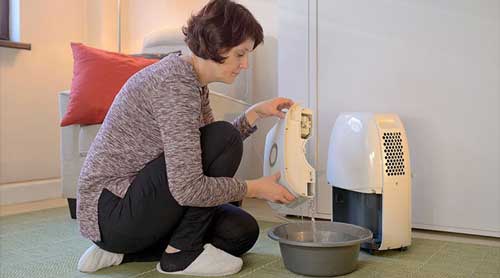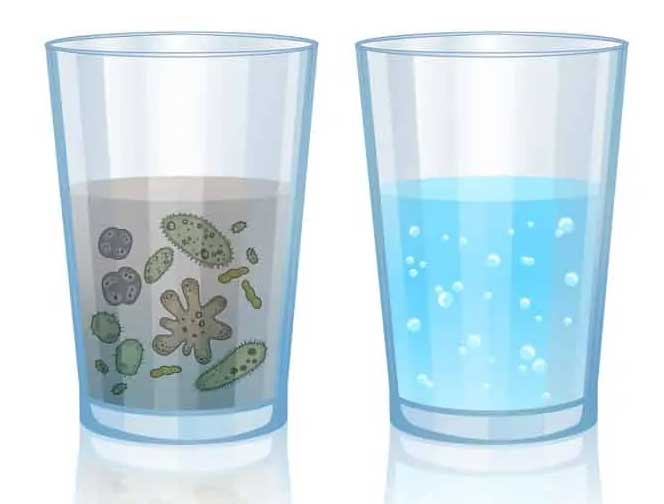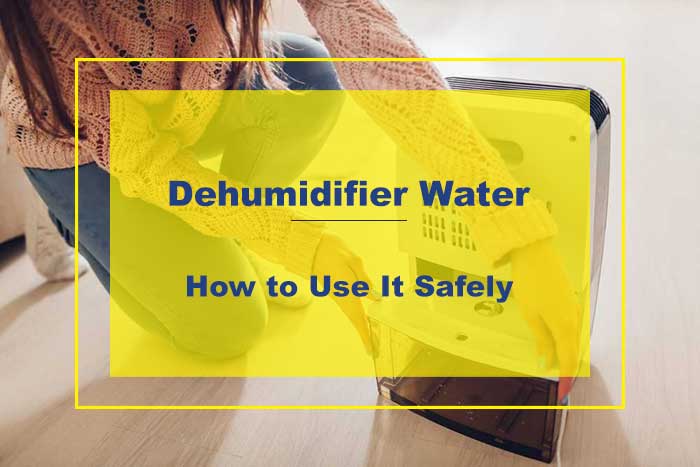Dehumidifiers are used to extract excess moisture. In 24 hours, one unit can collect about 10-20 liters of water; and large capacity dehumidifiers can extract up to 50 liters.
There is a pressing need to conserve our planet’s resources, including water. Reusing a dehumidifier’s condensate is a sensible way of preserving water, which could also save you a lot of money.
In this article we will discuss how and where the water collected by dehumidifiers can be reuse.
Is Dehumidifier’s Water Drinkable?
Whether a dehumidifier’s condensate is drinkable depends on several factors, including how long the water has been sitting in the reservoir.
The water vapor in your indoor environment is typically very pure, considering that the moisture left all the minerals and impurities behind when it vaporized. It, therefore, follows that you can technically collect pure drinking water from your dehumidifier and drink it, provided that your coils are clean.
However, the chances of the collected water remaining pure are close to none.
Dehumidifier water will often sit in the tank for a prolonged period, providing a conducive environment for bacteria and mold growth. Besides, dehumidifier water could be laced with airborne pollutants like industrial fumes, dust mites, bad odors, or even heavy metal, depending on where you live.
- The water from your dehumidifier might appear pure, taste good, and smell fine, but it’s not safe to drink without appropriate filtration and sterilization.

Risk of Drinking Dehumidifier Water without Filtration
The question of whether dehumidifier water is safe for human consumption is common question. Well, following few factors determine dehumidifier water unhealthy for drinking:
Industrial Pollutants and Heavy Metals
Dehumidifiers are typically not manufactured with food-grade materials. When water is extracted from your indoor environment, it passes through metallic and plastic components. Metals like aluminum and copper can cause acute or chronic poisoning, while plastics might leach carcinogenic compounds into your water.
Microorganisms
Water collected in the reservoir is essentially stagnant. Bacteria are certainly present and multiplying on the bucket’s surfaces. Also, harmful microorganisms present in your indoor air, including viruses and bacteria, could end up in the condensate.

What Else Not To Do With Dehumidifier Water
While there are several great uses for dehumidifier water, you will want to refrain from using the condensate in the following ways:
Dehumidifier Water Safe for Plants
Dehumidifier water may appear perfect for irrigating your beautiful flower bed or the trees in your backyard. However, water from your moisture extractor might contain microorganisms that could easily compromise your plants’ growth.
- Mixing the water collected by dehumidifier with tap water to dilute the chemicals before watering your plants may be plant safe and best way to utilize the collected water.
Using Water Stored for a Long Time
It only takes dehumidifier water a couple of days before it becomes septic. Therefore, it would help to empty the tank regularly and use the water immediately to hinder the possible multiplication of microorganisms, such as viruses and bacteria. Make sure that the water doesn’t remain stored for more than 24 hours.
Feeding your Pets
Water collected by your dehumidifier is likely to be laced with harmful chemicals from the material used to manufacture the unit. In a nutshell, dehumidifier condensate is gray water;
- Water collected via dehumidifier water isn’t safe for your pets’ consumption.
What to Do With Dehumidifier Water
Dehumidifier water might not be safe to drink, but you shouldn’t pour it down the drain.
Here is how you can recycle dehumidifier water to avoid wastage:
- When you’re feeling creative, you could put dehumidifier water to use. Ideally, mix the water with paint and involve your kids in creating something artistic.
- Dehumidifier water is also a logical choice for your outdoor cleaning chores. Such include washing windows and doors.
- You may also use the condensate to wash clothes.
- Water features in your home, including fountains and birdbaths, could be a great destination for your condensate.
How to Make Dehumidifier Water Safe for Recycle
A dehumidifier’s water tank and exhaust grilles may accumulate microorganisms over time. Regular cleaning of these parts ensures that the collected water is free from bacteria, viruses, and mold spores. Ideally, you should clean your unit at least once every week. Learn more about cleaning schedule for dehumidifier.
Here are vital steps for cleaning your moisture extractor:
Disassemble your Dehumidifier
Disassembling your moisture extractor will allow you to clean every part of the unit. But first, remember to unplug the appliance from the power source.
Clean the Coils and Filter
Use a soft brush to clean the coils thoroughly in a repetitive up and down motion; this will go a long way in removing the accumulated dirt. Spray the coils with a mixture of vinegar and water to disinfect them. After some time, pour warm water over the coils.
If your dehumidifier’s filter is washable, take it out from the unit and clean it gently with a sponge and soapy water. Allow the filter to dry fully before reinstalling it back into the unit.
Wash the Reservoir
You need to empty and clean your unit’s reservoir frequently with warm, soapy water. Ensure to scrub the tank gently with a soft brush. This is because mold and bacteria can accumulate in the bucket quickly and thereby contaminating the water.
Clean the Fan Blades
Using a wet cloth, wipe the blades to remove the accumulated dirt. You may also lubricate the blades using 2-3 drops of motor oil.
Dust the Grilles
To prevent obstructions in the grilles, grab a vacuum cleaner with a brush attachment and clean out the dust.
Reassemble the Unit and Plug It Back In
Once your dehumidifier dried out, reassemble the unit and plug it back into the power source. Keep an eye out for any condensation on the dehumidifier coils. If there is none, the unit has been cleaned and dried properly, and it’s ready to operate. If condensation occurs on the coils, seek professional assistance.
The Bottom Line
Can you drink dehumidifier water without filtration?
The answer is negative; water produced by your moisture extractor isn’t safe for consumption. Dehumidifier water may have the right color, smell, and taste, but you’ll be surprised to discover all the impurities in the condensate.
Such contaminants include microorganisms like viruses and bacteria, mold spores, dust mites, and metal residues. Therefore, unless you run the water through a filtration process, you can only use the condensate for other things except drinking.

